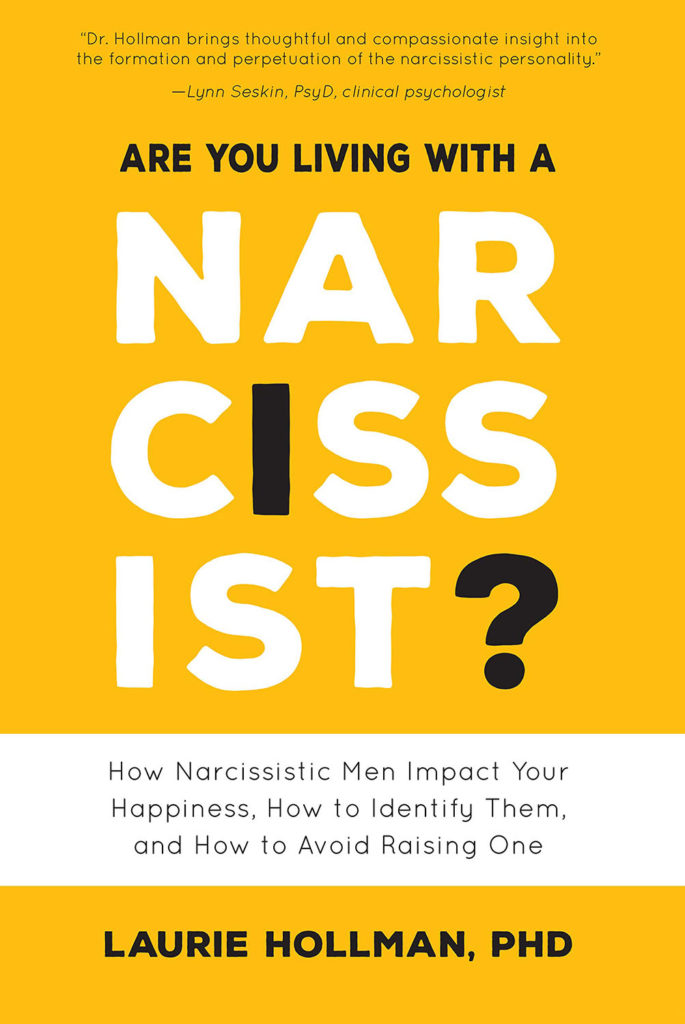Are You Living with a Narcissist? – Excerpts
Chapter Six
How a Couple Overcomes Narcissism:
Wade and Ava
“I am not a podiatrist!” Ava screamed as she tugged Wade’s suitcase from the top of their bedroom closet. Usually the most talkative person in any room, Wade stood at the end of their bed dumbfounded as he watched her flip open the top of the suitcase and point inside. “Put clothes in there now!” she demanded prior to stalking out of the room.
This was how Ava began to tell her husband, Wade, that she’d had enough. On their ride home from their neighbor’s cocktail party, Ava came to the decision that her marriage to her narcissistic husband had to take a breather. He had to get out, or they would not survive as a couple.
Wade finally found voice. “What did I do?” he called after her.
Ava was back in a flash. “What did you say when that idiot asked you if I was a podiatrist?”
“I said…uh…no, a pediatrician.”
“And then…? I’ll tell you,” Ava hissed. “You said in your smirky way, ‘Really no big difference, though.’ And then the two of you had a good chuckle at my expense.”
This had not been the first time that Ava, a hardworking and successful pediatrician, felt demeaned in public by her neurosurgeon husband, who felt that the work he did was the pinnacle of success in the world of medicine.
The description of the emotional manipulator/codependent couple by Rosenberg (2013) at the end of the last chapter applies to the case of Wade and Ava as well. However, as the interaction described above indicates, Ava is far less dependent on her narcissistic husband than was Laura. Like Laura, Ava desired her husband to be a strong, ambitious man; but when Wade’s continuous narcissistic behaviors grew too much for her early in their marriage, she took action by telling him to get out for a while so that she could catch a break before continuing in a marriage she definitely wanted. He was shocked, because his narcissism was severely rocked for the first time in his marital life—and by the woman he loved.
Chapter Eight
Dale and Her Narcissistic Father
Dale was the only child of a narcissistic father. Growing up she was generally reclusive, spending most of her time outside of school with her father. He had a way of secluding her from outside influences. She was responsive to his expectations; if she couldn’t meet them, she felt a sense of failure. Dale spent her life doing what she thought her father expected in order to gain his love and approval. Consequently, she did not develop a secure sense of self.
She always believed it was her job to make her father feel better about himself. He often confided in her about marital and work problems, topics he should have shared with his wife or another adult. If he was upset, she worked hard to make him happy, trying to be the perfect child and never upset him.
Dale’s father could subtly show his disapproval. He wasn’t openly threatening, but his body language spoke to her. He would give her a disgruntled look or turn his back on her whenever he deemed she had not responded to his needs fully enough. His specific tone of voice could shift and feel threatening. He also used silent treatment toward her when she inadvertently didn’t please him which caused her pain and confusion. She experienced guilt for angry feelings toward him, at times, that she didn’t understand. Always wanting to please him, she thought it was her fault if she didn’t. Thus, there were confused boundaries between father and daughter defining when she was and wasn’t responsible for his feelings, actions, and beliefs. If she had a differing point of view from him, she felt selfish.
Chapter Nine
Females and Their Narcissistic Men:
How Spouses of Narcissists Can Live
Happy, Healthy Lives
We have met three couples, all with pathologically narcissistic men and codependent women, and one pathologically narcissistic father with a teenage daughter. In this chapter, we look to further understand these females who eventually formed healthier senses of self. Each was seriously at risk emotionally and each needed a connection with someone who could offer unconditional acceptance, affirmation, and validation in order to feel restored.
We need to ask some questions. What conditions contributed to their codependency that made them vulnerable to narcissistic men? What are the factors involved in the codependent/narcissistic dynamic? And finally, how does the codependent female begin to bring about the kinds of changes that allow her to be more independent yet at the same time preserve her intimate relationship—if possible and wanted?
Conditions Contributing to Codependency that Make Women Vulnerable to Narcissistic Men
We have seen how the codependent (without outside help) will respond to the less healthy partner with a lack of awareness and respect for the inherent rights and needs of herself. According to Payson (2017),
the codependent suffers from a mental paradigm that places herself as less important than others. Her painful feelings, usually interpreted as reinforcement that she is inadequate and unlovable, keep her stuck in confusion and self-doubt…In order to regain her wholeness, the codependent must recognize her emotional depletion and seek therapeutic assistance. (75)
Regardless of their insecurities, the codependent women had greater accessibility to their own thoughts and feelings than the narcissistic men in these cases. Laura and Ava were more capable of self-reflection and self-examination with feedback from me as their therapist. They could empathize with their own feelings and those of others. Thus, their capacity to regulate their feelings and impulses considerably improved with treatment and as they worked on their relationships with their narcissistic husbands. However, their feelings of pain and low self-esteem surrounding their experiences would often return—bringing attendant anxiety and depressed moods.
